WES Command Center
Supply chain warehouse operations
In warehouse supply chain, WES ensures all tasks are intelligently optimized, grouped and assigned to mobile users in a pull-based model for true efficiency. Part of this system is Command Center, which blends past/present and predictive and prescriptive solutions of a warehouse.

User feedback
So much of warehouse operations is people based: Who the previous shift was, what they left me, what is the next few hours looking like for work and who will be here for it. Tasks determine if we will be on-time when the next shift comes on or how many orders will put us behind and try to catch-up.
The problem
Managers have to see what's happening right now AND what is going to happen soon. Users could not visualize the entire operations, holistically. The supervisors and site managers (different users) had their own needs that simply could not mirror into one view.
The solution
Command Center is an execution dashboard that shows all key areas of the warehouse, that allowed any user to: 1) dive into focus areas for details, 2) use an existing KPI (on-time delivery) as a central focus of warehouse health, 3) include Live insights using ML by implementing optimization rules as automatic tasks that users don't have to resolve.

Where [Dashboard] meets [Execution Tool]
Where a dashboard would only display past and current information, Command Center takes it a step further to be reference and launching point of predictive and prescriptive solutions. Users wanted both a high level overview and the ability to dive into key areas of the warehouse. Two primary users of Command Center are the warehouse managers (day-to-day ops) and the site supervisors.
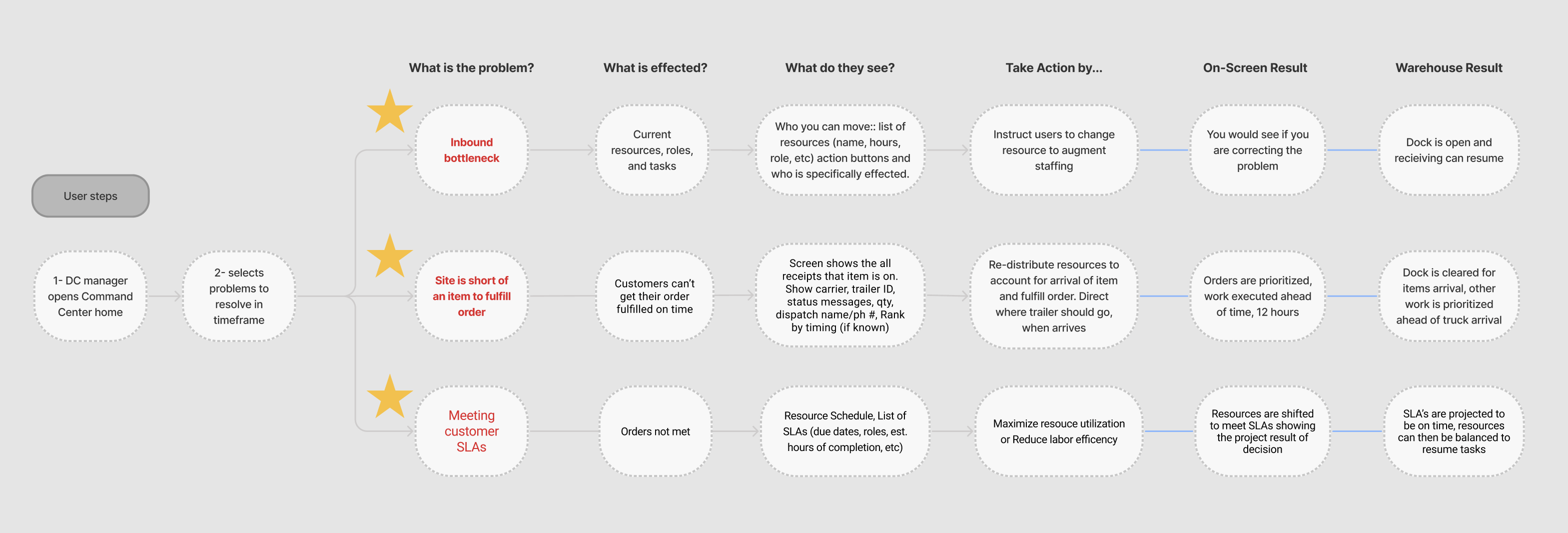


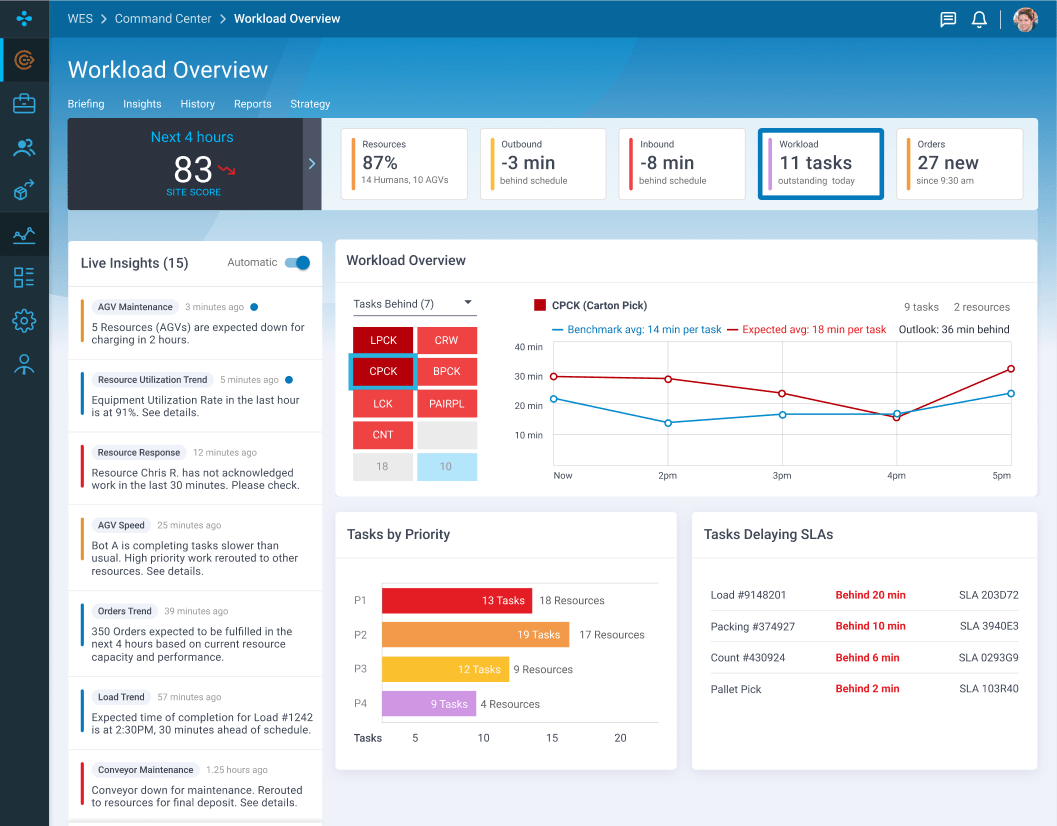
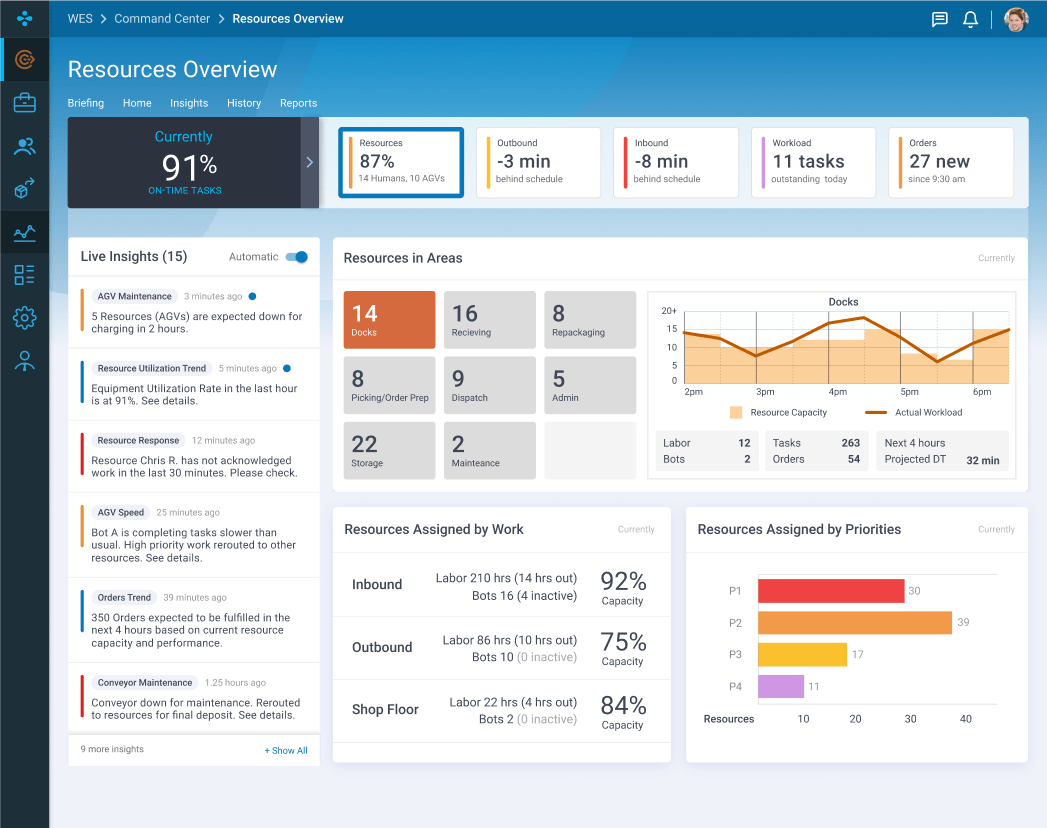
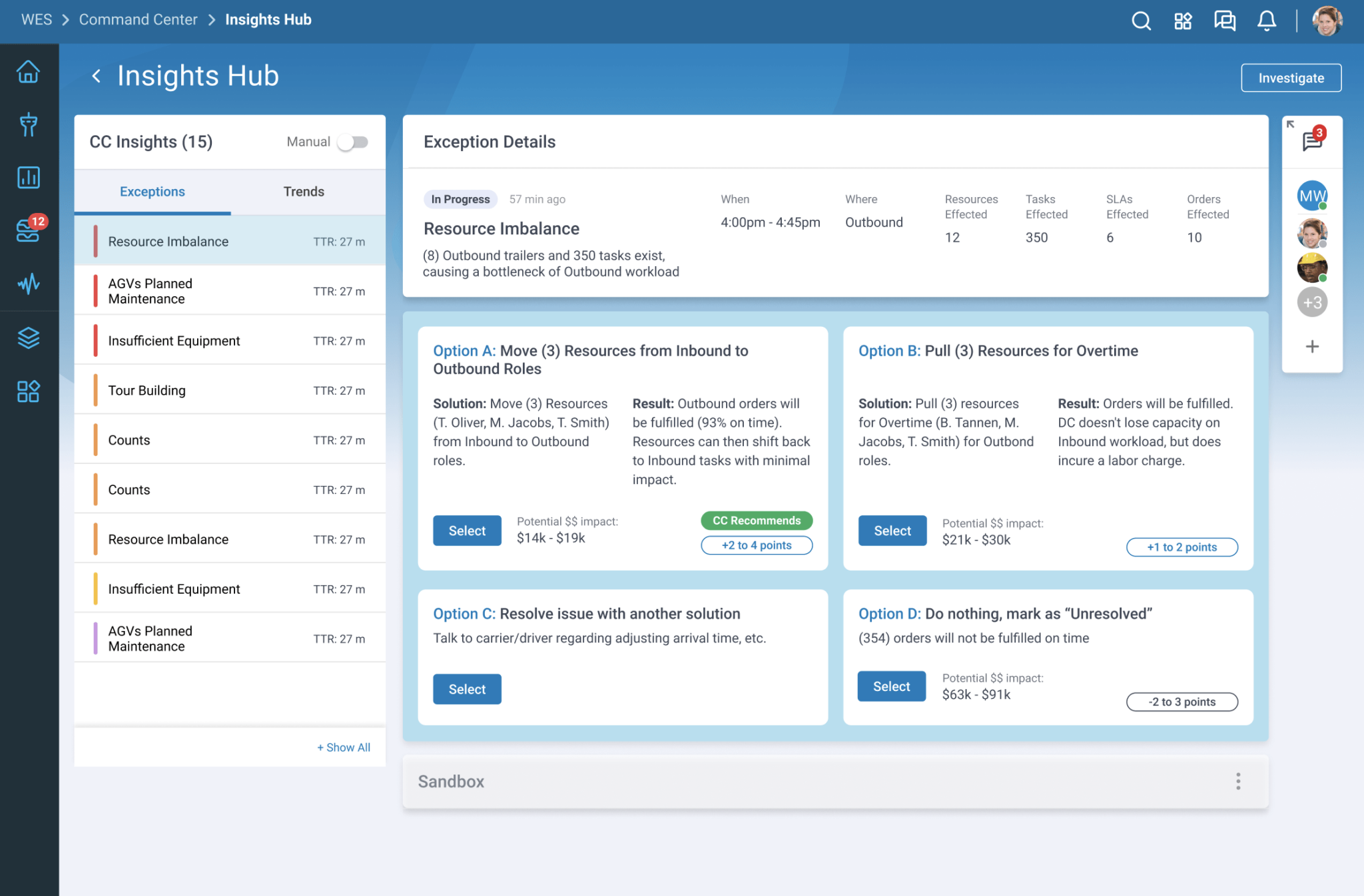
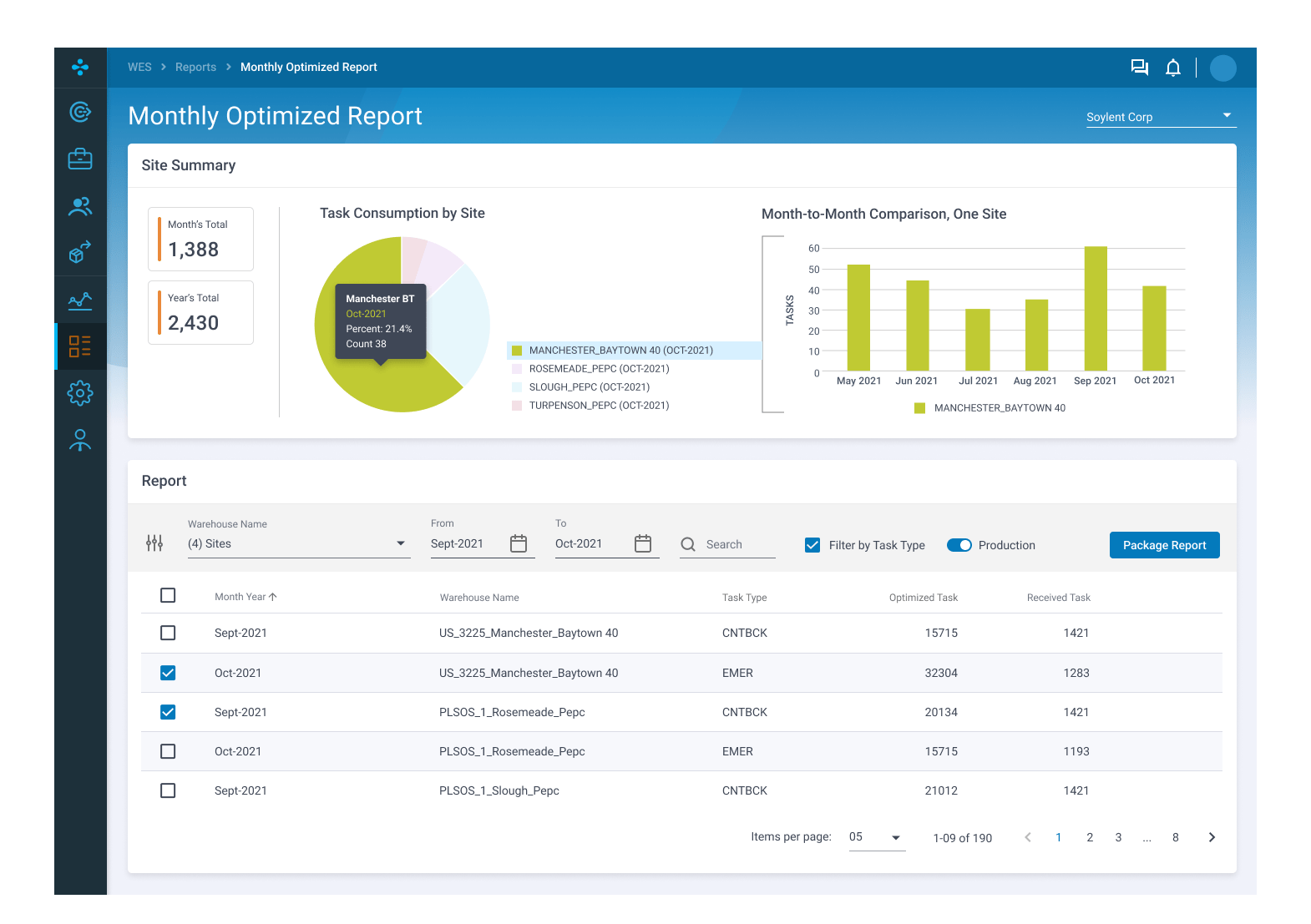
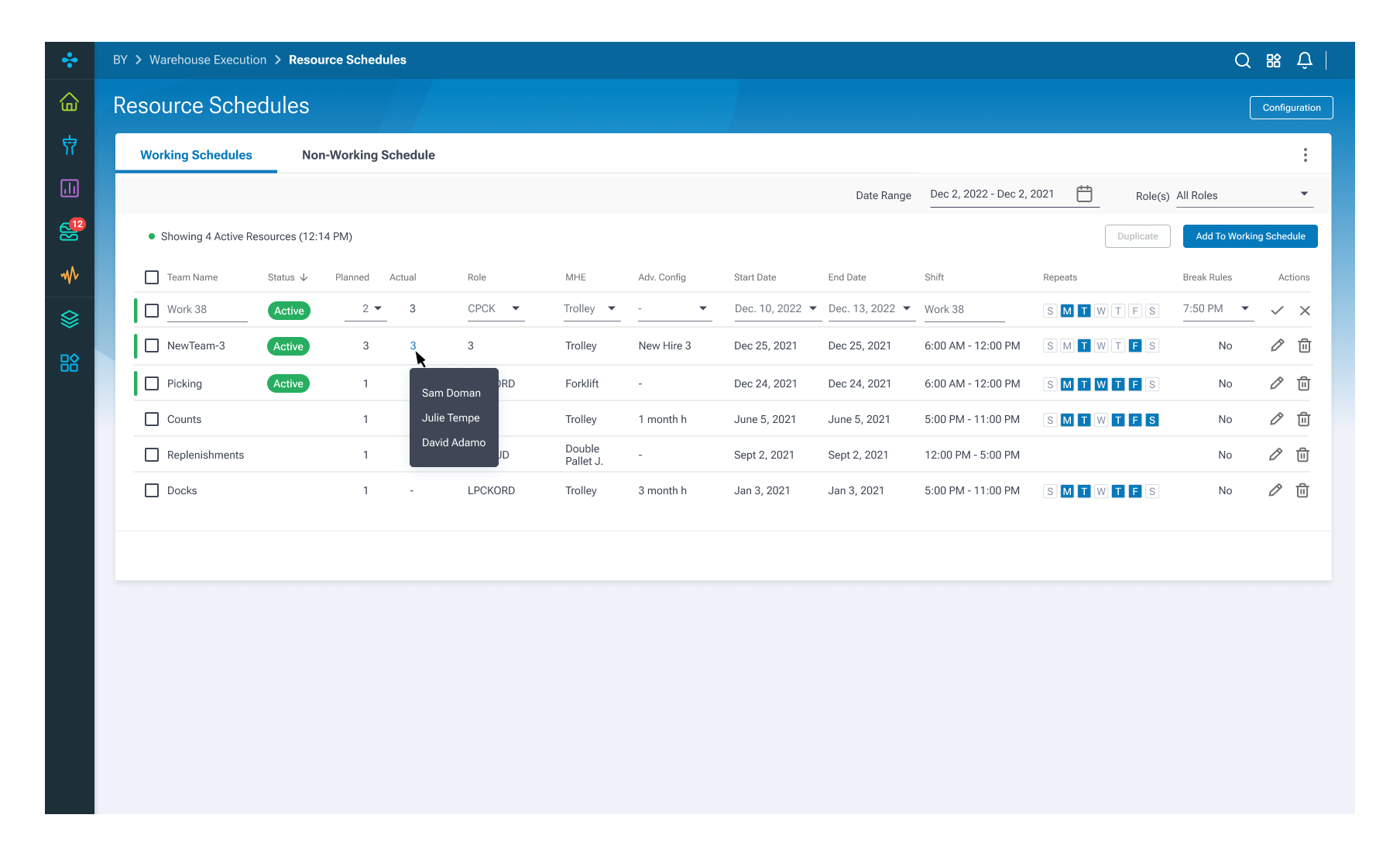
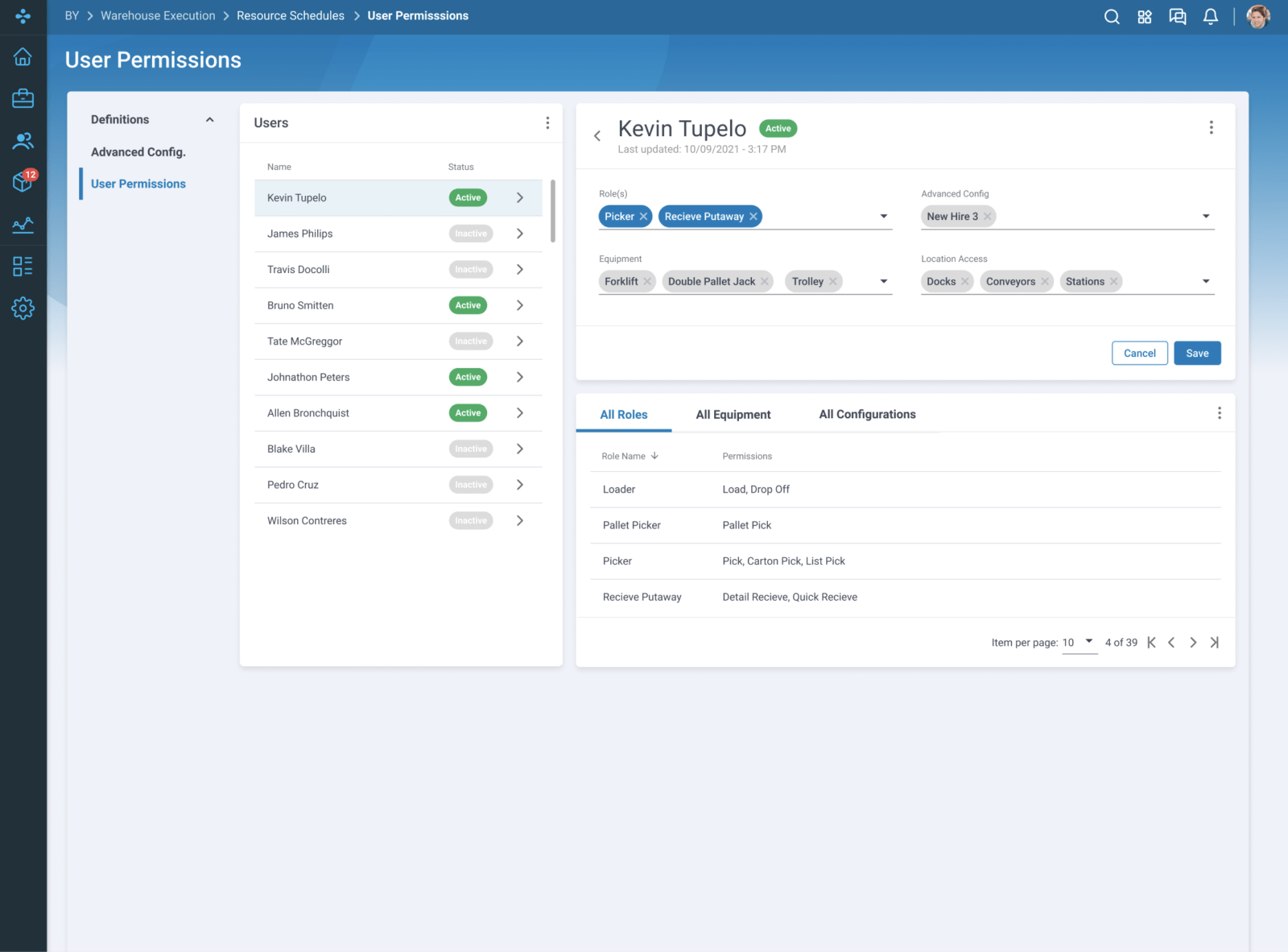
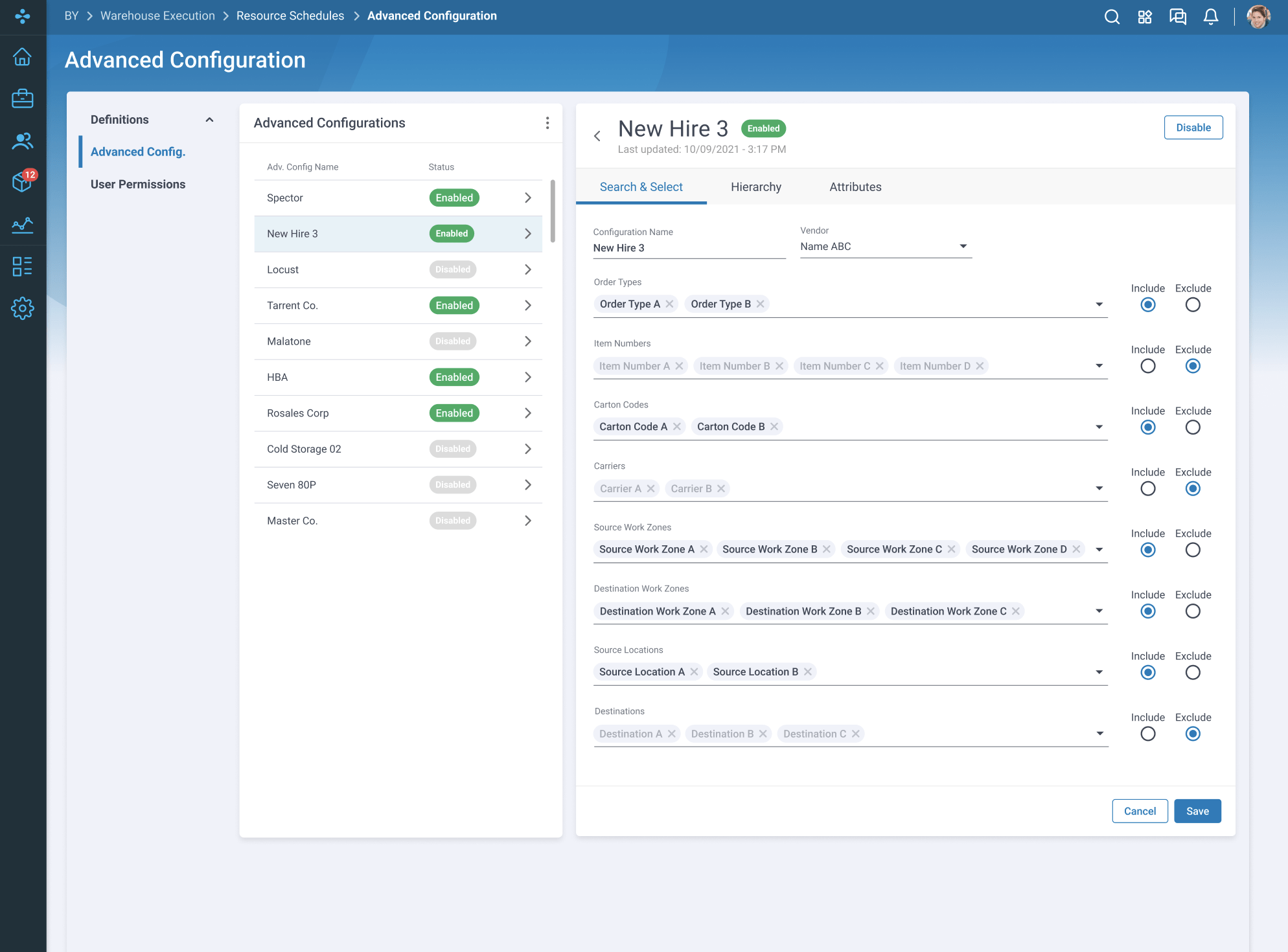
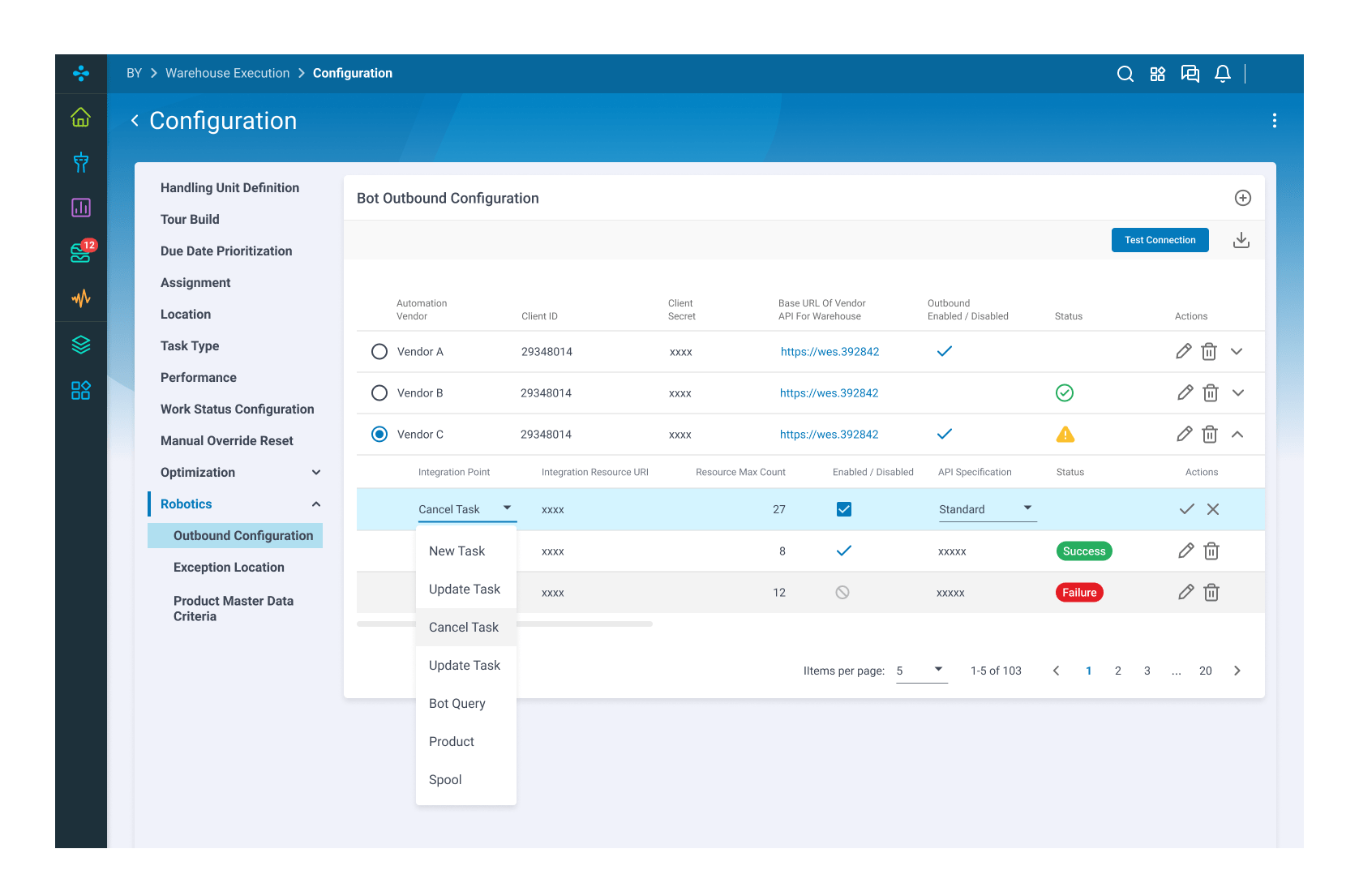
My role
I was the Lead UX/UI for WES, which included Command Center and two other sibling products for 10 months until leaving the company. I had two junior designers whom I mentored and assisted me on WES. I was also in future vision meetings brainstorming on automation and ML for WES.
Activities
user persona contribution, remote user interviews, created information architecture, designed user flows, wireframes, use-case validation, prototypes, hi-fi designs, hand-off meetings, development reviews
Stakeholders
1 UX Designer (me)
1 Project manager
1 Technical analyst
1 Business analyst
2 Developers
2 Junior designers
Results
- WES improvements shortened task time for warehouse picking efficiency
- Uncovered trailer arrival KPIs customers could use for driver scoring
- Mentored 3 junior designers for sister applications of WES, contribute to DS
- Helped research, test repositories, eventually integrating research into Dovetail for UX teams
